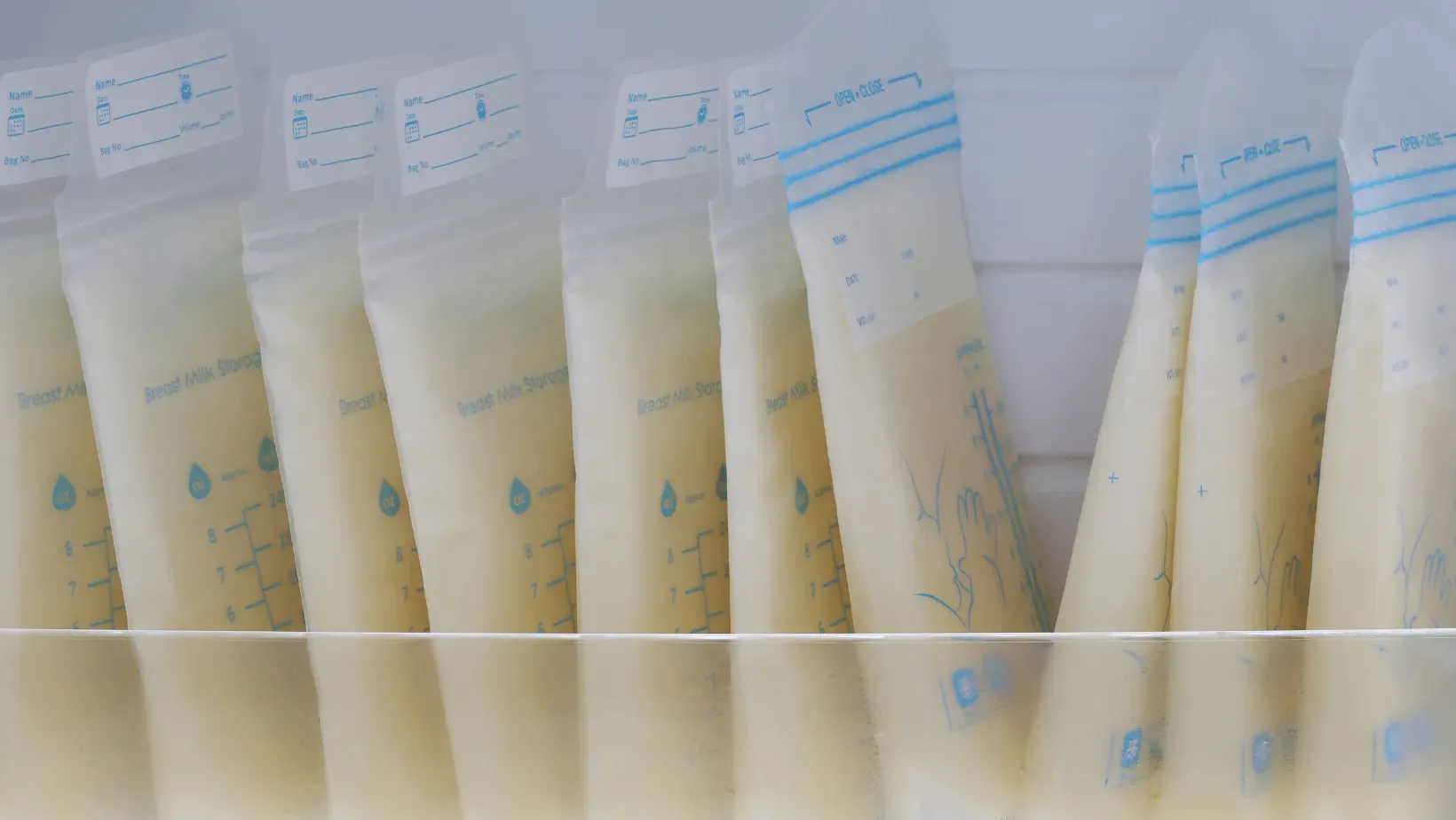Many studies have shown that a baby’s milk intake does not change much between the age of 1 to 6 months. Your body is so phenomenal that it actually changes the composition and quantity (amount of calories) of your breast milk according to your baby’s needs.
In a perfect world, every mother breastfeeds her baby. But this is not an ideal world, and there are so many reasons why we might need to compromise. Therefore, this article is directed toward mothers expressing breast milk, not at the mothers breastfeeding their babies directly at the breast. (Average milk removed while breastfeeding)
By pumping, you can never determine the amount of breast milk produced because your baby removes milk much more efficiently from your breasts than a breast pump can. If your baby is gaining weight well and is happy, you don’t need to worry about the amount of milk you produce.
If you are concerned about whether your baby is getting in enough milk, read our “is my baby drinking enough” page.
How Much Expressed Breast Milk Will Your Baby Need?
Just like adults, each baby has different needs. It’s as easy as letting your baby lead the way. If you know your baby’s hunger cues, it’s much easier.
Many studies have shown that a baby’s milk intake does not change much between the age of 1 to 6 months. Your body is so phenomenal that it changes your breast milk’s composition and quantity (amount of calories) according to your baby’s needs. The bigger your baby gets, the more calories they will need, but don’t worry; your body will take care of that.

The volume of Expressed Breast Milk
The following table is only a guide. Never force your baby to finish a bottle. Let them take the lead.
Average Daily Breast Milk Intake for Breastfed Babies
| Age | Approximate Amount per Feeding (mL) | Number of Feedings per Day | Approximate Total Daily Intake (mL) |
|---|---|---|---|
| Week 1 | |||
| Days 1-3 | 5-10 | 8-12 | 30-60 |
| Days 4-7 | 45-60 | 8-12 | 300-450 |
| Weeks 2-3 | |||
| Week 2 | 60-90 | 8-12 | 450-600 |
| Week 3 | 80-100 | 8-12 | 550-700 |
| Month 1 | |||
| Weeks 4-5 | 90-120 | 8-12 | 600-750 |
| 6-8 Weeks | 95-125 | 7-9 | 700-850 |
| Months 2-4 | |||
| 2-3 Months | 100-150 | 7-8 | 750-900 |
| 3-4 Months | 100-150 | 6-8 | 750-900 |
| Months 4-6 | |||
| 4-6 Months | 120-150 | 6-8 | 750-900 |
| Months 6-12 | |||
| 6-9 Months | 120-150 | 5-7 | 600-750 |
| 9-12 Months | 120-140 | 4-6 | 500-700 |
Breastmilk charts for both formula and breastfed babies
* Each baby is different, and it’s recommended that you feed on demand, instead of following a rigid schedule.
Remember, this is only a guide. Feed on demand! Your baby is different and will tell you when they want more or have had enough.
An informative article by WHO: Nutrient adequacy of exclusively breastfeeding for the first six months of life (free online PDF)
What Factors Can Change Your Baby’s Milk Intake?
- Boy vs. Girl: In general, boys need more calories than girls. The reason for this can be that boys grow faster than girls. On average, boys will drink about 30 to 60ml more than girls.
- Growth spurts: When babies go through growth spurts, they drink more to support the extra growth. Growth spurts most commonly occur at 7 – 14 days, two months, four months, and six months.
- Starting solids: When your baby starts solids, they may begin to drink a little less than usual. Remember that most of a baby’s nutrients in the first year should be from your breast milk.
- Reverse cycling (switching day and night): If your baby switches day and night feedings, they will drink more during the night and less during the day.
- Over-lactation: Read more about oversupply and hindmilk/foremilk imbalance.
- Combination feeding: Your breast milk composition changes to meet your baby’s needs, whereas, with formula milk, you have to follow the required amounts to ensure that your baby gets enough.
Factors That Can Affect How Much Milk You Express
- The amount of milk removed from your breasts. The more you remove, the more milk you will produce.
- If you give formula with breast milk, your body will naturally assume that your baby needs less milk.
- The time between your last breastfeeding or pumping session. Less time between sessions, less milk.
- Time of the day. Your milk supply is different at different times of the day, for example, more in the mornings.
- Your emotional state. Negative feelings such as stress release adrenaline into your blood, which might slow down milk flow.
- Your pump quality and fit. The better the pump, the better the suction. Also, ensure that your pump flange sits comfortably.
What Are Your Baby’s Hunger Signs?
Every baby is different. You will get to know your baby’s cues for just about everything. But every mother needs a little help in the beginning.
When it comes to hunger cues, a baby has three stages of hunger: early, active and late stage.
Early hunger signs:
- Licking his lips.
- Opening and closing the mouth.
- Sucking on hands, fingers, lips, tongue, toes, toys, or clothing.
Active Hunger signs:
- Looking for your breast (even in dad’s arm).
- Getting in the usual nursing position.
- Getting restless or moving around a lot.
- Breathing faster or fussiness.
Late hunger signs:
- Crying.
- Moving head anxiously from side to side.
TIP: Look for these hunger signs closer to the next feeding time. These signs will be very prominent if your baby hasn’t fed in two to three hours.
Some signs, like suckling on his hands, might be comforting or pure curiosity. Thus the closer to feeding time, the easier to see the difference.
Weight Gain and Soiled Nappies
If you think you are over- or underfeeding your baby, keep an eye on weight gain and dirty nappies. If he is gaining the average amount of weight required, you are doing a great job.


